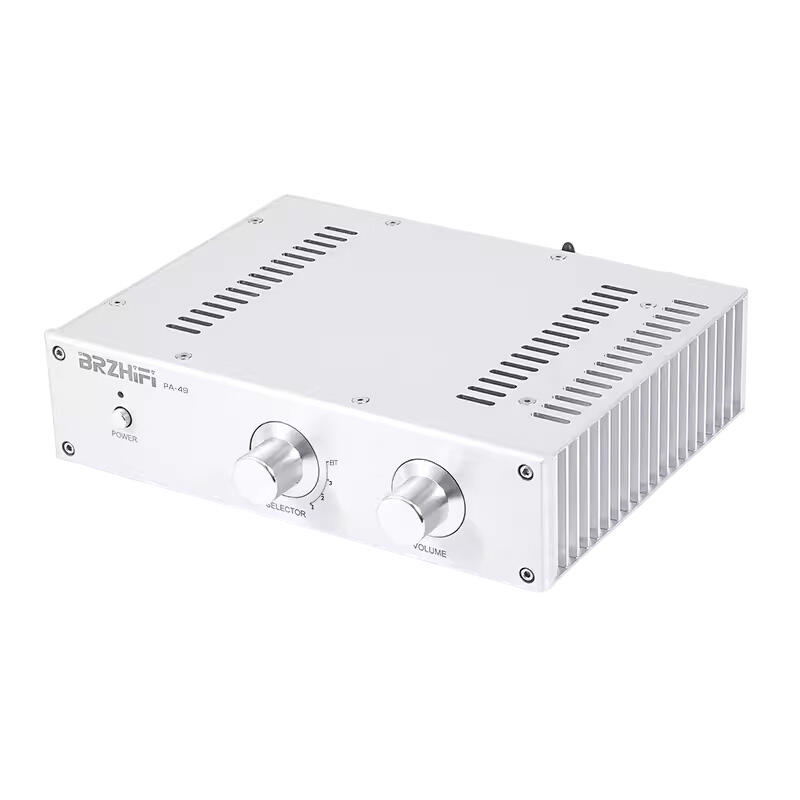Understanding Digital-to-Analog Converters in Modern Audio
The world of digital audio has evolved dramatically, making DACs (Digital-to-Analog Converters) more crucial than ever for audiophiles and casual listeners alike. As we approach 2025, choosing the right DAC has become an essential consideration for anyone serious about sound quality. In this comprehensive DAC buying guide, we'll explore the latest technologies, must-have features, and expert insights to help you make an informed decision.
Digital-to-analog conversion remains at the heart of modern audio playback, transforming digital signals into the analog waveforms that your speakers or headphones can reproduce. With streaming services delivering high-resolution audio and vinyl-quality digital formats becoming standard, the right DAC can make a substantial difference in your listening experience.
Essential Features of Modern DACs
Signal Processing Capabilities
Today's premium DACs offer sophisticated signal processing capabilities that go far beyond basic conversion. Look for devices that support high-resolution audio formats up to 32-bit/384kHz, as well as DSD (Direct Stream Digital) compatibility. The latest models are incorporating advanced jitter reduction algorithms and upgraded clock generators for precise timing and cleaner sound reproduction.
Modern DAC chips have evolved to handle multiple digital filters and processing modes, allowing listeners to fine-tune their audio experience. Some high-end units even feature customizable filter settings, enabling users to adjust the sound signature to their preference.
Connectivity Options
The connectivity landscape has expanded significantly, and versatile input options are now a crucial consideration. Look for DACs that offer USB, optical, and coaxial inputs as standard. The inclusion of Bluetooth aptX HD and LDAC support has become increasingly important for wireless streaming, while balanced outputs are essential for integration with high-end amplifiers.
Furthermore, modern DACs should feature both single-ended (RCA) and balanced (XLR) outputs, providing flexibility for different system configurations. The presence of a high-quality headphone amplifier section is also valuable, especially for desktop setups.
Advanced Technologies Shaping DAC Performance
Digital Architecture Innovations
The latest DAC designs employ sophisticated digital architectures that minimize noise and distortion. Multi-parallel DAC chip implementations are becoming more common, offering improved dynamic range and lower noise floors. Advanced oversampling techniques and proprietary digital filters are being implemented to reduce digital artifacts while preserving the natural character of the music.
Manufacturers are also focusing on electromagnetic interference (EMI) reduction through improved circuit design and component isolation. This attention to detail results in cleaner power delivery and better overall performance.
Analog Stage Developments
The analog output stage has seen significant improvements, with manufacturers implementing discrete component designs rather than integrated circuits. This approach allows for better control over the final sound quality and improved reliability. Class A output stages are becoming more energy-efficient while maintaining their superior sound characteristics.
Power supply design has also evolved, with many premium DACs now featuring multiple independent power supplies for digital and analog sections. This separation helps maintain signal purity and reduces unwanted interactions between different circuit stages.
Integration and User Experience
Software and Control Systems
Modern DACs are increasingly equipped with sophisticated software interfaces and control systems. Look for devices that offer firmware upgradeability to ensure future compatibility and feature enhancements. Mobile apps for remote control and settings adjustment are becoming standard, providing convenient access to advanced features.
Some manufacturers are incorporating room correction and digital signal processing (DSP) capabilities, allowing users to optimize their DAC's performance for specific listening environments. These features can make a significant difference in achieving the best possible sound quality.
System Compatibility
When selecting a DAC, consider its compatibility with your existing audio equipment and future upgrades. Modern units should work seamlessly with various operating systems and music players. MQA (Master Quality Authenticated) decoding capabilities are increasingly important for streaming high-resolution content from services like Tidal.
The ability to handle multiple input sources simultaneously and switch between them effortlessly is crucial for complex audio systems. Look for DACs that offer intelligent input switching and remember individual settings for different sources.
Frequently Asked Questions
How important is the DAC chip manufacturer in determining sound quality?
While the DAC chip is important, the overall implementation, including power supply, analog output stage, and circuit design, plays a more crucial role in determining the final sound quality. A well-designed DAC with a modest chip can outperform a poorly implemented device with a premium converter.
Should I prioritize wireless connectivity in a new DAC?
Wireless connectivity is increasingly important, especially with the prevalence of mobile devices and streaming services. However, if you primarily use wired connections, focusing on traditional digital inputs and output quality may be more beneficial for your setup.
What's the significance of balanced outputs in a DAC?
Balanced outputs offer better noise rejection and can provide increased voltage swing for improved dynamic range. They're particularly beneficial when using long cable runs or in professional environments where maximum signal integrity is required.
How do I determine if a DAC will be future-proof?
Look for DACs with firmware upgrade capabilities, support for high-resolution formats (including DSD), and multiple digital inputs. Features like MQA decoding, Bluetooth aptX HD, and balanced outputs will help ensure compatibility with future audio formats and equipment.

